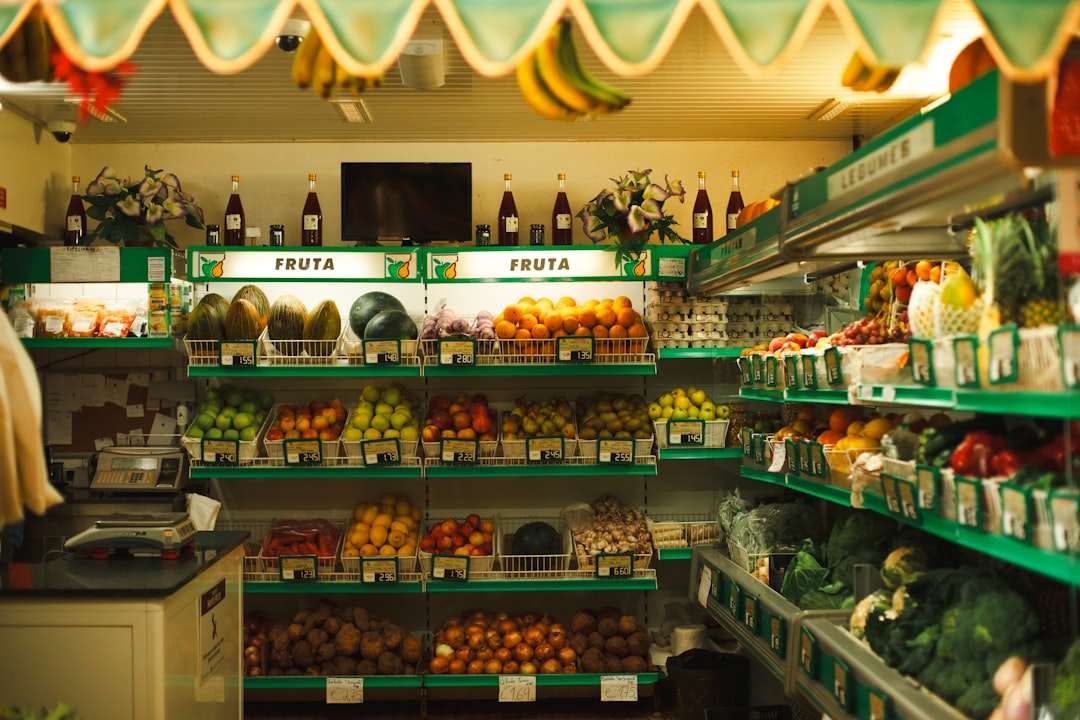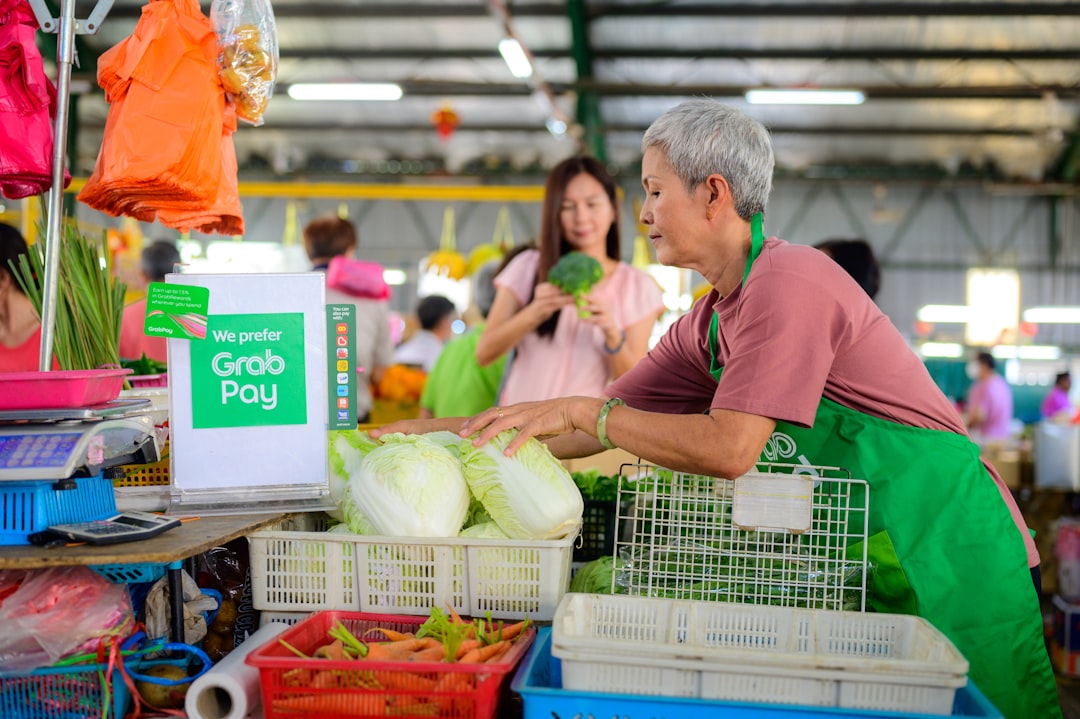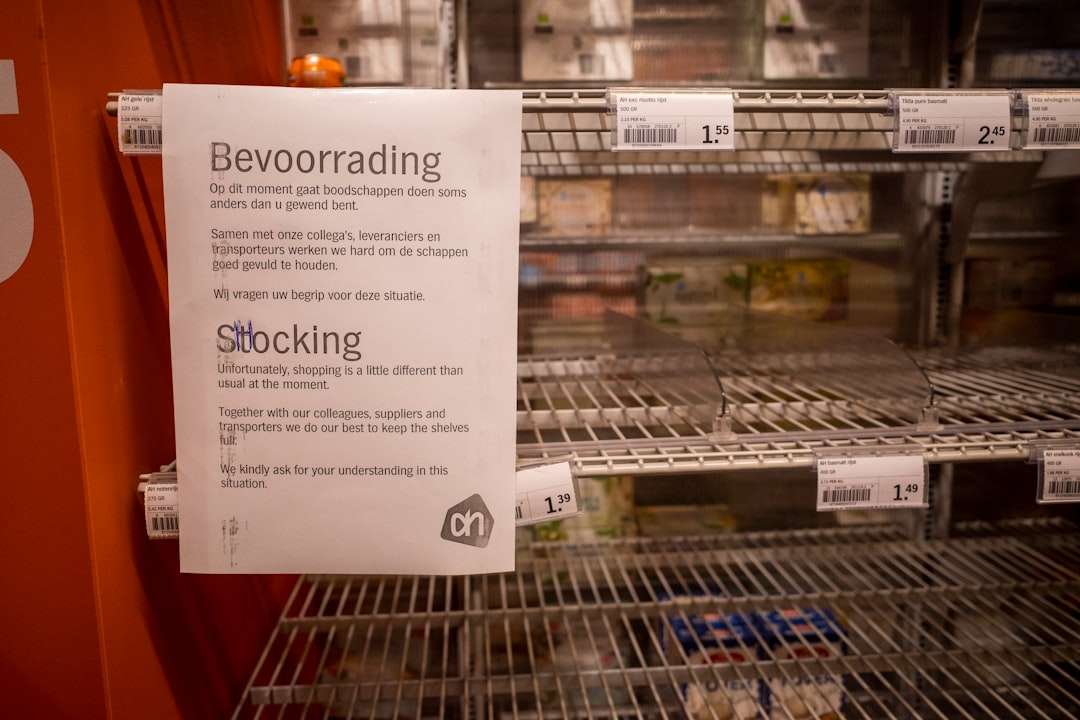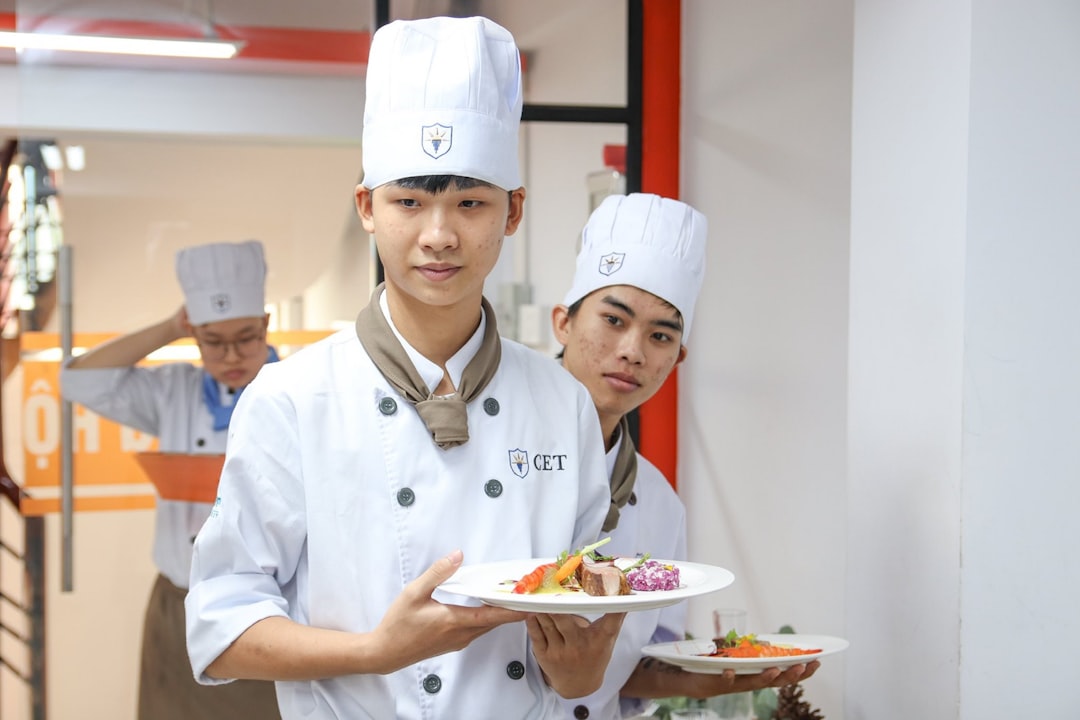

Engage prospects with a scan and streamline customer engagement with FREE QR code marketing tools by Sona – no strings attached!
Create a Free QR CodeFree consultation

No commitment

Engage prospects with a scan and streamline customer engagement with FREE QR code marketing tools by Sona – no strings attached!
Create a Free QR CodeFree consultation

No commitment
Digital transformation is reshaping the landscape for food service management companies, with customer expectations for speed, convenience, and personalization at an all-time high. Yet, many businesses still face friction when bridging offline guest experiences such as paper menus, printed offers, and in-person ordering with the powerful capabilities of digital engagement and data capture. These analog touchpoints often create missed opportunities for building relationships, capturing high-value leads, and streamlining operations.
The consequences surface daily: valuable prospects may interact with your venue but never make it into your CRM, and anonymous guests who show interest through subtle actions remain invisible to your marketing and sales teams, leaving revenue on the table. The outcome is uneven service, stalled loyalty, and an inability to attribute which physical touchpoints actually drive conversion or repeat visits.
QR codes offer a seamless, intuitive solution for food service management companies to connect every physical interaction with online journeys, as shown in QR codes in marketing. With a single scan, guests can access touchless menus, place orders, submit feedback, or join loyalty programs without downloading an app or navigating complex forms. This not only elevates the customer experience but also lets operators capture valuable engagement data, close offline-to-online visibility gaps, optimize workflows, and increase sales. When each scan is tied to a dynamic destination and tracked centrally, leaders can finally measure what works, iterate quickly, and turn one-time interest into measurable revenue. See Sona QR’s product overview for how this works in practice.

For food service management companies, QR codes transform every table, counter, and printed piece into an on-ramp for digital conversion. Companies often struggle to consistently capture contact information or feedback when guests interact with paper-based assets, which means high-value prospects drift by untracked and unengaged. By embedding QR codes in the right places with the right calls to action, you can shorten the path from interest to action and make engagement measurable across venues.
Traditional analog processes such as paper surveys, printed menu inserts, and manual sign-up sheets create friction and data loss. Replace them with QR-powered experiences that capture intent signals in real time, feed your CRM, and automate the next best action. Modern platforms like Sona QR support this transformation by generating dynamic, trackable codes and centralizing scan data.
When you standardize these workflows, every scan feeds a clearer picture of guest behavior. Leaders gain a real-time view of high-fit interactions, enabling smarter segmentation, better service design, and targeted follow-ups that keep diners engaged across the full lifecycle.

Food service management companies manage high-velocity transactions and must deliver operational efficiency at scale. The problem is that many guest actions remain invisible or untracked, especially when those actions begin offline. You can serve thousands of meals per day, yet still have limited insight into who browsed which items, who considered an offer, or who was intrigued by a catering flyer but never followed up, as operators move beyond the menu with QR-driven engagement.
QR codes solve this challenge by providing a low-friction path from physical touchpoints to digital destinations. Guests scan a code on a tray liner or receipt, then instantly land on a menu, a short form, or an offer. The experience is simple, fast, and measurable. As a result, you capture engagement that would otherwise go unnoticed, while guests enjoy convenience and clarity.
Applied to the realities of food service, QR codes connect common materials such as menus, receipts, grab-and-go labels, and catering brochures to live digital experiences. That is the difference between guesswork and a truly data-driven operation.

Selecting the right QR code format ensures guests land in the best possible place for the task at hand. Food service management teams handle a mix of dine-in, takeout, events, and enterprise catering, each with unique conversion goals. Matching the format to the use case makes scanning intuitive and valuable.
Dynamic codes are the default for most campaigns because destinations change often. Static codes still have a place for permanent assets such as a Wi-Fi login or an evergreen safety information page. The key is to align the format with how frequently content changes and whether you need granular analytics.
A modern QR platform like Sona QR lets you manage all of these formats in one place, swap destinations without reprinting, and keep every scan measurable. That means fewer headaches, cleaner data, and more effective campaigns.

Too often, operators place one QR code on a menu and call it a day. Growth comes from a more strategic approach: you map the journey, place codes where attention naturally peaks, and ensure there is a clear benefit to scanning. Each placement becomes a small experiment that tells you what resonates with your audience.
Think through the physical spaces and materials your guests already use. The goal is to meet them where they are with a relevant action. Combine placements with concise calls to action such as Scan to see today’s chef special or Scan to save 10 percent on your next visit. Then review performance weekly and refine.
Deploying QR codes across these touchpoints aligns messaging, closes gaps in prospect tracking, and shines a light on untapped upsell or retention opportunities. The more thoughtful the placement and CTA, the higher the return.
Analog workflows make it hard to know who engaged, when, and why. QR codes turn those moments into measurable actions that feed your CRM and marketing. By designing a few core use cases well, you create a repeatable playbook for engagement and growth.
Start with quick wins that deliver both operational value and marketing insight. Each of the use cases below captures intent, removes friction, and supports downstream automation such as triggered emails or offers.
Each use case not only improves the guest experience but also provides real-time analytics for smarter decisions. Over time, you will know which offers bring people back, which menu items drive scans, and which venues need extra support.
Every QR scan is a signal that helps you understand intent and context. By deploying unique codes at key moments, you can segment audiences automatically and deliver targeted follow-ups that feel helpful rather than generic. This turns fragmented touches into a connected nurture path.
Food service management companies serve multiple audiences: daily diners, first-time visitors, staff and faculty in institutional settings, and corporate decision-makers for catering. Distinguishing among these groups at the scan level lets you tailor offers and communication cadence to maximize conversion and retention.
With this foundation, your marketing adapts to real behavior and context. Instead of hoping a one-size-fits-all offer resonates, you deliver precise value to the right diner at the right moment.
Disconnected channels create attribution blind spots and dilute campaign impact. QR codes act as the connective tissue between physical experiences and digital systems, enabling real-time engagement and continuous data capture. When every offline asset drives to a coherent digital journey, guest experiences feel consistent and conversion rates climb.
Think of QR codes as the offline onramp to your marketing stack. A scan can trigger a personalized landing page, kick off a loyalty enrollment, or route to a survey. With a centralized platform like Sona QR, you can manage codes across campaigns, monitor performance by placement, and sync scan activity to your CRM and ad tools. For examples by vertical, see Sona QR’s restaurants industry guide.
QR codes create a feedback loop. Offline placements drive to digital destinations, data flows back to your systems, and you iterate on what works. The result is a connected experience that turns casual interest into repeat business.
A structured rollout helps teams avoid common pitfalls such as unclear CTAs, poor scannability, or missing analytics. Treat each QR initiative as a measurable experiment with a clear business outcome, then scale what works across venues and materials.
Below is a concise, field-tested sequence you can follow to launch campaigns confidently and optimize them quickly. Adapt the examples to your environment, whether you manage a corporate food court, a university dining system, or an enterprise catering program.
Start by defining the business outcome you want to achieve. Streamlined ordering, higher feedback volume, faster loyalty enrollment, or more catering inquiries are all valid goals. Select one goal per campaign so success is unambiguous.
Identify where analog friction exists. If paper feedback cards are rarely filled out, switch to a QR survey with two or three questions. If special menus change weekly, link QR codes to a dynamic page you can update in minutes.
Decide between static and dynamic codes. Static suits permanent resources such as a corporate nutrition policy PDF. Dynamic is best for anything you plan to update or track over time, which includes nearly all marketing and operations use cases.
Ensure your platform supports analytics, A/B testing, and destination editing. Sona QR offers dynamic codes with detailed reporting and easy retargeting integrations. Start creating QR codes for free.
Design the QR experience for clarity and speed. Pair each code with a concise, benefit-driven CTA so guests know why to scan and what they will get. Use brand colors and a frame to make the code visually distinct without compromising scannability.
Test across lighting conditions, device types, and distances. Print at sufficient size, maintain quiet zone margins, and validate that the destination page is mobile-optimized and fast.
Place codes where attention peaks and action is logical. Tables, receipts, menu boards, packaging, and lobby signage are consistent winners. Use multiple placements for the same goal to learn which ones perform best.
Train staff to point out codes during service and to explain the benefit quickly. A ten-second mention can triple scan rates when guests understand the value.
Review analytics weekly. Identify which placements, venues, and CTAs drive the most scans and conversions. Where performance lags, test a new CTA, adjust placement, or update the offer.
Close the loop by syncing results to your CRM and automations. Trigger a thank-you email after a feedback scan, or send a limited-time offer to new loyalty sign-ups to prompt a second visit. Read Sona’s perspective on accurate revenue attribution to align metrics with outcomes.
Following a methodical approach minimizes risk and maximizes learning. Over time, your team builds a library of proven placements and messages that can be replicated across locations for efficient scale.
A frequent frustration in food service is investing in print menus, flyers, or coupons without knowing what actually drives repeat visits or sales. Without tying scans to outcomes, you cannot attribute which materials or venues deserve more budget. QR analytics change that calculus by linking every scan to downstream actions and revenue.
Move beyond vanity metrics. The most useful lens is how scans influence the guest journey: did the scan lead to an order, a loyalty enrollment, a survey completion, or a catering inquiry? With Sona QR and Sona, you capture scan data in real time, unify it with web and CRM data, and attribute revenue with confidence.
The result is a closed-loop system. Scans become signals, signals drive actions, and actions drive measurable outcomes. You spend smarter, improve faster, and make the case for continued investment with clear ROI.
Scaling QR impact depends on consistency, training, and automation. Fragmented deployment and weak follow-through limit ROI, even when placements are strong. A few operational habits will keep your program growing and your data clean.
Choose the tactics that fit your environment and tech stack. If your teams already use HubSpot or Salesforce, integrate scan events to automate next steps. If you publish weekly menus or specials, dynamic codes and scheduled updates will save hours and reduce errors. For broader trends, see the strategic future of QR codes.
A consistent playbook combined with thoughtful training and automation turns QR from a novelty into a durable growth lever. The more reliably you follow through after a scan, the faster engagement compounds.

QR codes are already transforming how food service management companies capture demand and improve operations. The best programs start small, prove value, and then scale across venues with standardized assets and analytics. Below are examples that illustrate measurable wins and spark new ideas.
Think beyond menus. QR can power storytelling, staff highlights, and community engagement. For instance, a campus dining program can rotate codes that link to student-sourced recipes, nutrition education, or local supplier spotlights, each tagged for analytics and follow-up.
Use these ideas as templates. When you combine compelling CTAs with dynamic destinations and real-time analytics, even modest campaigns can drive substantial engagement and learning.
The most common missteps range from poor placement to unclear CTAs. A code buried in a crowded design or placed too small will not get scanned. A landing page that loads slowly or asks for too much information will cause drop-off. Addressing these basics boosts results without extra spend.
Operators also underestimate the impact of staff training. Guests notice confident, helpful prompts. A ten-second nudge from a cashier or server can make the difference between a campaign that fizzles and one that delivers a reliable stream of scans and conversions.
For food service management companies, QR technology is a catalyst for streamlined operations, elevated engagement, and data-driven success. By transforming every physical asset into a digital touchpoint, you minimize lost leads, reduce disconnected campaigns, and achieve higher order volume, improved feedback rates, and integrated workflows.
QR code solutions enable instant engagement across menus, packaging, signage, and in-venue experiences, creating a continuous customer journey from first scan to repeat purchase, including for guests who would otherwise remain anonymous. The rich data captured closes the loop on campaign attribution, surfacing post-visit upsell and retention opportunities that might have slipped by unnoticed.
With a robust QR framework in place, food service leaders can meet evolving guest expectations, adapt messaging as needs change, and scale new touchpoints quickly. The path is clear: turn every moment of interest into a measurable action, build momentum with each scan, and convert insight into predictable growth.
QR codes have transformed food service management companies from traditional operational methods into dynamic, data-driven engagement platforms. Whether it’s streamlining order management, enhancing customer interactions, or gathering real-time feedback, QR codes replace cumbersome processes with instant, mobile-friendly solutions that boost efficiency and satisfaction. Imagine effortlessly tracking which menu items or promotions capture customer attention—and adjusting your strategies on the fly to maximize impact.
With Sona QR, food service management companies can create dynamic, trackable QR codes in seconds, update campaigns instantly without reprinting, and link every scan directly to actionable insights and revenue growth. No more guesswork, no missed opportunities—just smarter, more profitable customer engagement.
Start for free with Sona QR today and turn every scan into a seamless experience, a valuable insight, or a loyal customer.
They use QR codes to provide touchless menus, enable easy ordering, collect feedback, and enroll guests in loyalty programs, creating faster, personalized, and convenient interactions.
QR codes connect physical touchpoints to digital journeys, capture real-time engagement data, streamline operations, reduce print costs, improve tracking, and increase sales through targeted offers.
By placing QR codes on menus, packaging, and signage to promote add-ons, loyalty programs, and personalized promotions, companies can convert interest into measurable revenue and encourage repeat visits.
Innovations include dynamic digital menus, QR-powered feedback and workflows, intent-driven follow-up through scan data, integration with CRM systems, and multi-channel marketing using trackable QR codes.
They replace paper processes with QR-powered mobile forms for orders, RSVPs, feedback, and catering inquiries, reducing staff workload, improving data accuracy, and enabling automation.
Common formats include web links to menus and ordering, feedback forms, promotions and coupons, Wi-Fi access codes, and SMS or email pre-filled messages for inquiries.
Effective placements include table tents, menu boards, takeout packaging, point-of-sale receipts, venue signage, direct mail, and event materials where guests naturally look and engage.
By creating unique QR codes for different customer journey stages, tagging scans by use case and location, syncing data to CRM and ad platforms, and delivering personalized follow-ups.
Define a clear objective and audience, select appropriate QR code types, design with clear CTAs, deploy strategically at high-impact spots, and track analytics to optimize performance.
Analytics track scan data by time, location, and device, link engagement to orders and loyalty enrollments, enable real-time adjustments, and integrate with CRM for accurate revenue attribution.
Use unique codes per asset, add UTM parameters, train staff to promote scanning, automate follow-ups, and experiment with creative placements to increase engagement and maintain clean data.
Avoid poor placement, unclear CTAs, small or hard-to-scan codes, slow-loading pages, lack of staff training, and failure to monitor and optimize campaign performance regularly.
Use Sona QR's trackable codes to improve customer acquisition and engagement today.
Create Your FREE Trackable QR Code in SecondsJoin results-focused teams combining Sona Platform automation with advanced Google Ads strategies to scale lead generation

Connect your existing CRM

Free Account Enrichment

No setup fees
No commitment required

Free consultation

Get a custom Google Ads roadmap for your business






Launch campaigns that generate qualified leads in 30 days or less.
